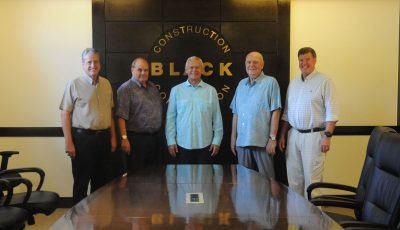Bot burgers
For some people, every new day is an opportunity to excel and to follow their dreams. For me, a new day means another chance to eat a hamburger. My way is better. It has fewer risks of disappointment.
The humble burger has proven to be one of the most stable icons of modern life. I’ll therefore submit it as an excellent index for trend watching, under the theory that if the bedrock of the burger business starts shifting, then something profound must have moved it. After all, I’ve seen many industries change since I was a kid, but the hamburger business doesn’t seem to have changed at all.
Maybe that lack of change is, well, changing. Industry pros say that McDonald’s may start replacing some human jobs with robotic devices. I don’t know how much of that talk is mere speculation, and how much is rhetoric for various industry and policy issues; I guess only time will tell. But there is some movement on related fronts.
For example, another hamburger chain, Wendy’s, is said to be unveiling automated order takers for some of its U.S. mainland locations later this year.
In the broader realm of fast food, a Shanghai KFC has unveiled a robot order-taker named “Dumi.” Meanwhile, Pizza Huts in Asia are teaming up with MasterCard to bring robot service to their restaurants; the robot model is called “Pepper,” and I’ve mentioned it before in this space.
It’s not clear to me whether today’s examples of food-service robots are used as gimmicks to attract attention, or if they’re genuinely able to out perform human labor for certain jobs.
When it comes to the customer service jobs, the automated interface is a pretty old idea. I remember when an automated teller machine first arrived at our local bank. That was in the 1970s.
In the mid-1980s, we were tending our mutual funds using automated voice prompts over touch-tone phones. I don’t recall if we just checked our balances that way, or if we could actually buy and sell, but, either way, the days of talking to a broker were, for many people, drawing to a close.
By the mid-to-late ’90s, the Internet became a giant catalog, of course. Amazon.com is the blockbuster example, but I recall an outfit called Cyberian Outpost being popular in Saipan back in the day. The first Web order I ever placed was from the Joeten-Kiyu library’s computer center.
In recent times, we’ve seen airlines use electronic screens for self check-in, and I’ve seen some banks replace many of their tellers with fancy, high-tech kiosks that are like turbo-charged ATMs.
Over all these decades, and despite the ubiquity of fancy technology, a humble $1 hamburger sale has eluded automation, while a $20,000 mutual fund transaction hasn’t. Yet if we were to rewind everything by, say, 50 years, and we were asked to speculate about which realm would be the first to take a hit from automation, I suspect that most of us would have picked the hamburger flipper over the licensed securities broker. I know I would have.
One hunch I’ll entertain is that if we’re on the cusp of robo-restaurants, it may well be a newcomer to the industry that makes the breakthrough, just as it was Amazon that became the big force in cyber-retailing despite entrenched catalog houses such as Sears, J.C. Penney, and Lands’ End. Newcomers can maneuver at will to build their vision, while the old players are frequently trapped inside of their own bureaucratic bubbles.
Still, there is some swashbuckling to be had even from some old-school names. In management circles, KFC, for example, is famous for the dexterity of its Asian operations. That reputation has been rolling for at least 20 years now. I’ve crossed paths with thriving KFCs in places so remote that I could scarcely believe they had electricity. Yeah, KFC is known as a chicken place, not a burger place, but, still, if I had to watch one big name as a bellwether of fast food trends, I’d pick KFC in Asia.
I’ll readily admit that some of the industries that I’ve been involved with seem to indulge automation for the mere sake of automation, but I’ll also admit that the world doesn’t exist to suit my preferences.
As for the world’s preferences, well, we can ponder one slice of that gig. The average American adult is said to spend over 11 hours per day using electronic media. That’s from a Nielsen report for the last quarter of 2014. When it comes to the broad embrace of technology, then, I think the tipping point was passed a long time ago.
Faced with this brave new world, all we can do is look it in the photovoltaic eye and say, “Yes, I want fries with that.”



























